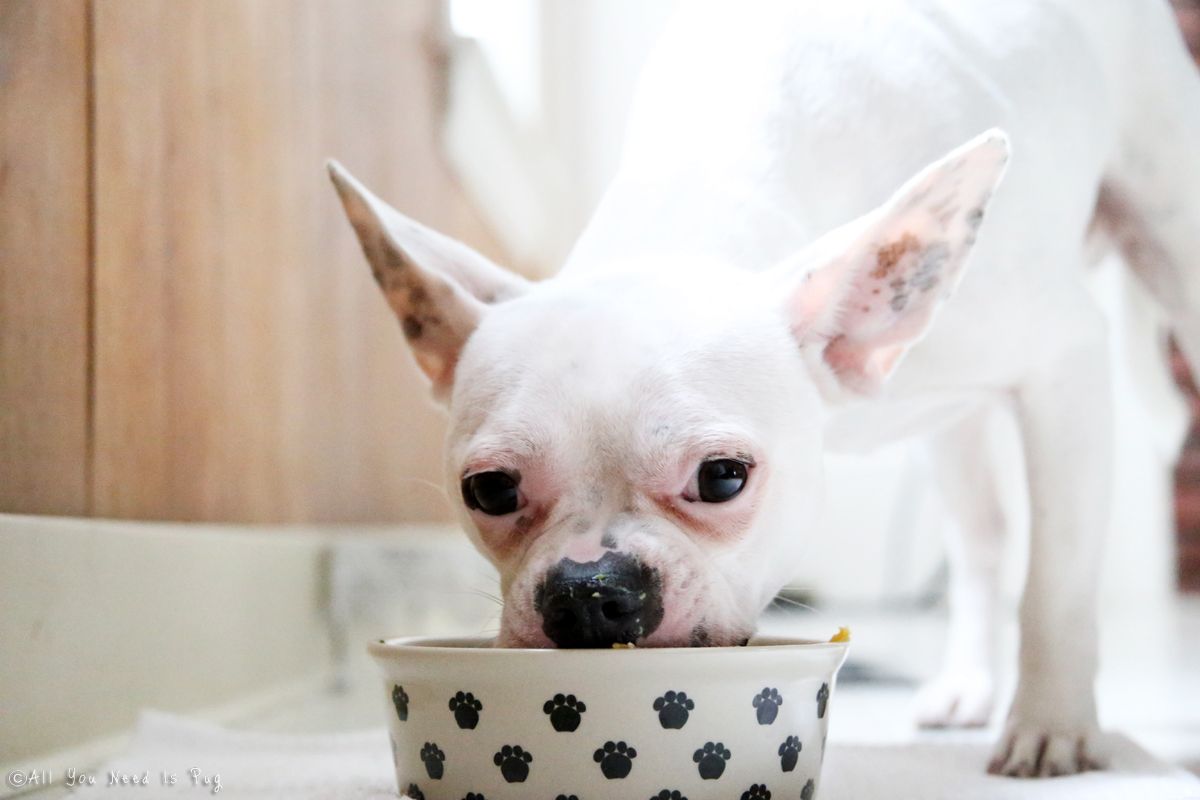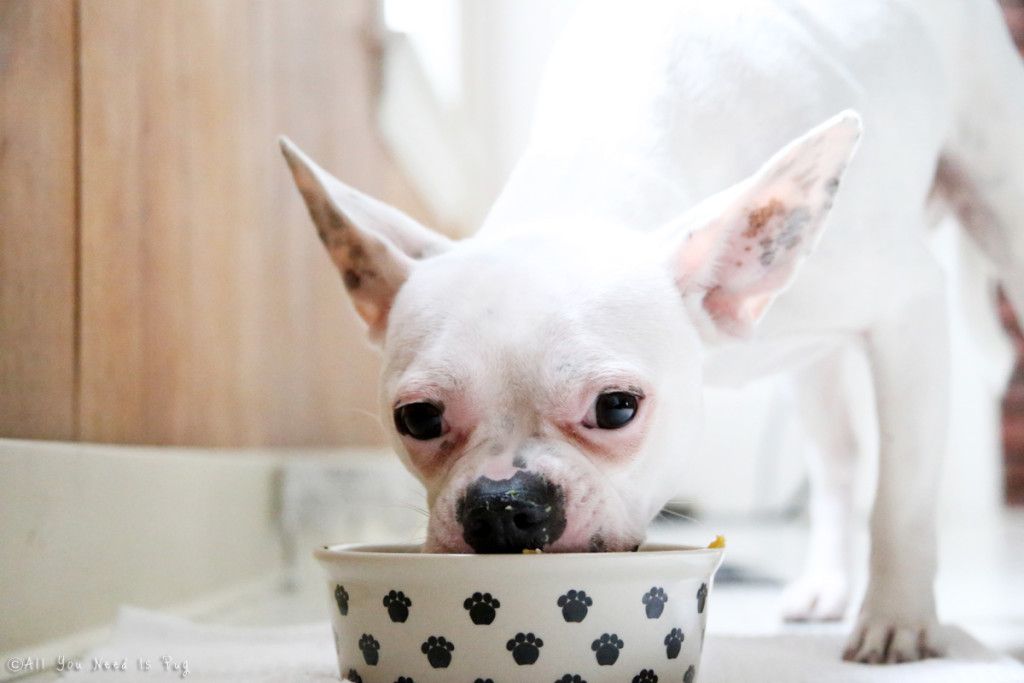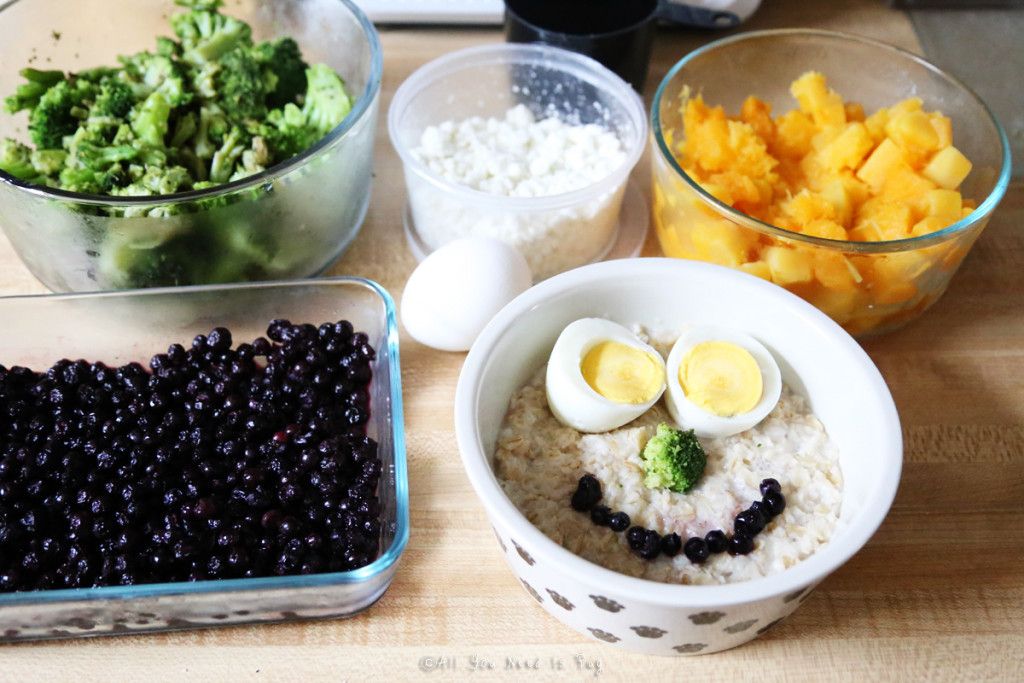
Here in the All You Need is Pug house, we love food! Dog food is a topic that comes up in many conversations we have at events and on social media. All pet parents share the same goal: to raise pets that are happy, healthy, and thriving. Nutrition plays a large role in our pets’ overall health, just as it does in our own. It can be difficult to decide what to feed your pets when there are hundreds of options on the market and many deceiving ads that make not-so-healthy foods seem more beneficial than they actually are. Today, I am shedding some light on how we feed our dogs and why the All You Need is Pug team thinks that there’s nothing better than a good home-cooked meal.
When I rescued JD in 2008, I was 17 years old and a first-time dog owner. At the time, I was a vegetarian considering going vegan. I spent a lot of time reading nutrition books and trying to decide what the best choices were for my body. Despite the fact that I was very conscious about what I fed myself, I didn’t know much about dog nutrition. The day I adopted JD the rescue gave me a bag of kibble from a big-name brand that JD’s previous owner had been feeding him, but immediately I noticed that his stool was loose. I decided to switch brands, and while JD’s stool improved and he seemed content with the kibble, the company that manufactures the kibble made the news when tainted bags of food began affecting pets. That’s when I decided that I couldn’t trust my dog’s nutrition to anyone’s hands but my own.
I went to my local library and ordered every dog nutrition book available in our consortium. I spent weeks reading up on which foods promote health in dogs, and which foods are toxic and dangerous for dogs to eat. I tossed out every bag of kibble and every treat that contained ingredients that weren’t human grade and began to make JD’s food in my own kitchen. What I found is that home cooking for dogs is actually shockingly simple because they can eat many of the healthy foods that we, as humans, should be incorporating into our diets. JD was more than happy to make the switch to wholesome ingredients like green beans, broccoli, eggs, carrots, and oats. He would come running for his meals in a way that he never did when I was pouring his dinner out of a bag. After JD’s first home cooked meal, I never went back to store-bought again.
JD, Murphy, and Ringo are all fed homemade meals twice each day. For those who are curious about what these meals look like, we’ve included a sample recipe below for one of the boys’ favorite dishes.
AN IMPORTANT NOTE:
Before you dive in, I will note that before changing your dog’s diet or making any major health decisions, you should always consult your veterinarian, especially if your pet has a disease, chronic illness, or takes medications. I am not a veterinarian or pet nutritionist and am not responsible for the decisions you make regarding your pet’s health and eating habits. Keep in mind that all pets are different and will respond differently to dietary changes. You should be aware of your pet’s allergies, sensitivities, and medical history. Be sure to take the time to learn the foods that are safe for dogs to consume as well as those that are dangerous for dogs to consume. CityLeash has a helpful list of safe and unsafe foods to help you get started and you can find it on their website.
The Boys’ Blueberry Breakfast Bowl Recipe
Ingredients:
¼ cup dried oats
½ cup filtered water
1 hardboiled egg
2 TBSP butternut squash (cut into tiny cubes and boiled)
1/8 cup chopped broccoli
1 TBSP blueberries
½ TBSP crumbled goat cheese
¼ TBSP coconut oil
Tips & Directions:
- Tip: At the beginning of the week, prepare a large quantity of each of the ingredients and refrigerate them. This will save you time throughout the week. Also, hardboil half a dozen eggs at a time to have them ready for a few meals.
- Tip: Frozen veggies are a great alternative to fresh if you are pressed for time, as they generally only take about 5-10 minutes to prepare. Frozen organic veggies are your best options.
- Cook oats in the filtered water. You can cook the oats in the microwave in a microwave safe bowl, or on the stove in a small pot. Determine cooking time by following the directions on your box of oats.
- Combine all ingredients in your dog’s bowl and serve at room temperature.
Our dogs eat meals similar to these twice daily and also take a natural vitamin and mineral supplement to help fill in any nutritional gaps. We switch up the veggies, fruits, proteins, and grains to ensure that they are getting a wide variety of nutrients, and they look forward to devouring each and every one! If you think that a home cooked diet would be a good option for your dog, take the first step by talking to your vet about healthy choices.
Happy eating!

